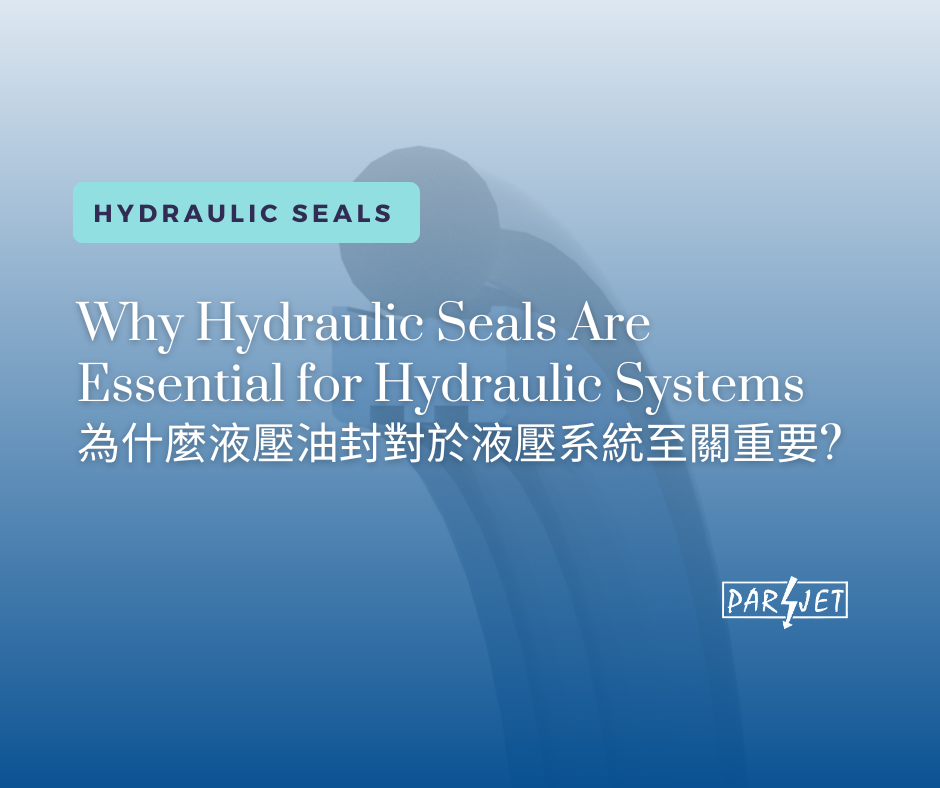Why Hydraulic Seals Are Essential for Hydraulic Systems
Hydraulic systems are the backbone of many industrial applications, providing the necessary power to lift, move, and operate machinery. At the heart of these systems are hydraulic seals, which play a crucial role in ensuring their efficiency and longevity. As one of the leading hydraulic seal manufacturers, we'll explore why hydraulic seals are essential for hydraulic systems and how they contribute to their optimal performance.
Understanding Hydraulic Seal
What Are Hydraulic Seals?
Hydraulic seals are components designed to prevent fluid leakage in hydraulic systems. They are typically made from a variety of materials, including rubber and plastic, to withstand specific operating conditions such as pressure, temperature, and chemical exposure. Common hydraulic seal materials include natural rubber, nitrile rubber(NBR), Polyurethane(PU), polytetrafluoroethylene (PTFE), and Fluorocarbon(FKM).
Types of Hydraulic Seals
- Rod Seals: Prevent fluid leakage from the cylinder and ensure smooth motion of the rod.
- Piston Seals: Maintain pressure within the cylinder, ensuring efficient power transmission.
- Wiper Seals: Keep contaminants away from the hydraulic system, protecting internal components.
- O-Rings: Provide a reliable seal in static and dynamic applications.
The Importance of Hydraulic Seals
1. Preventing Fluid Leakage
One of the primary functions of hydraulic seals is to prevent fluid leakage. Hydraulic systems rely on high-pressure fluids to operate effectively. Any leakage can lead to a loss of pressure, resulting in reduced efficiency and potential system failure.
2. Ensuring System Efficiency
Hydraulic seals maintain the necessary pressure within the system, ensuring that the hydraulic fluid transmits power effectively. By preventing fluid loss, seals help maintain consistent system performance, which is critical for the smooth operation of machinery.
3. Protecting Components
Hydraulic seals protect internal components from contaminants like dust, dirt, and moisture. Wiper seals, in particular, play a crucial role in keeping foreign particles out of the hydraulic system, thereby extending the lifespan of the components and reducing the risk of damage.
4. Reducing Maintenance Costs
By preventing leaks and protecting components, hydraulic seals help reduce maintenance costs. A well-maintained hydraulic system with effective seals requires fewer repairs and replacements, leading to cost savings in the long run.
5. Enhancing Safety
Leaks in hydraulic systems can pose safety risks, including the potential for slip and fall accidents or equipment malfunctions. Hydraulic seals ensure that the system operates safely by containing high-pressure fluids and preventing accidental spills.
Selecting the Right Hydraulic Seals / Hydraulic Seal Types
Choosing the appropriate hydraulic seals for your system is crucial for optimal performance. Consider the following factors:
- Material Compatibility: Ensure that the seal material is compatible with the hydraulic fluid and operating conditions.
- Pressure Rating: Select seals that can withstand the system's pressure requirements.
- Temperature Range: Choose seals that can operate effectively within the system's temperature range.
- Seal Type: Match the seal type (rod, piston, wiper, O-ring) to the specific application needs.
Parjet’s Advanced Hydraulic Sealing Features
Parjet offers high-performance sealing solutions specifically designed to address the common causes of hydraulic seal failure. Here are three key features of Parjet's hydraulic seals that provide superior reliability and longevity:
1. Superior Chemical Resistance
Parjet’s hydraulic seals are made from advanced materials with exceptional chemical resistance. This ensures that the seals can withstand exposure to a wide range of hydraulic fluids and chemicals without degrading, maintaining their integrity and performance over time.
2. Temperature Resilience
The high-performance materials used in Parjet’s seals offer excellent resilience to extreme temperatures. Whether operating in high-heat environments or in frigid conditions, Parjet’s hydraulic seals retain their flexibility and strength, preventing issues related to temperature-induced degradation.
3. High Durability and Wear Resistance
Parjet’s hydraulic seals are engineered for high durability, with materials that resist mechanical wear and tear. The seals are designed to withstand the constant motion and pressure of hydraulic systems, minimizing abrasion and extrusion. This results in longer-lasting seals that provide reliable performance and reduce the need for frequent replacements.
Parjet’s Hydraulic Seal Failure Analysis
When a hydraulic seal fails prematurely, Parjet’s FEA (Finite Element Analysis) team can help identify the reason by simulating the conditions leading to failure. This information is useful for designing custom hydraulic seals that perform better and last longer. FEA allows us to continually improve seal performance, reduce costs, enhance durability, and ultimately deliver superior products. Based on Parjet’s FEA data, our hydraulic seal design can benefit customers from saving time and labor through certain adjustments to improve seal performance and lifecycle for their hydraulic equipment.
Conclusion
Hydraulic seals are indispensable components in hydraulic systems, ensuring efficiency, protection, and safety. By preventing fluid leakage, maintaining system pressure, protecting components, reducing maintenance costs, and enhancing safety, hydraulic seals play a vital role in the reliable operation of hydraulic machinery. Having a reliable partner in high-quality hydraulic seals and selecting the right solution for your hydraulic system can lead to significant benefits.
As one of the pioneer hydraulic seal suppliers in Taiwan, Parjet provides various hydraulic sealing solutions such as High-pressure hydraulic seal, High temperature hydraulic seal, Hydraulic cylinder seals, and Hydraulic seal kits.
Click here to view Parjet’s Hydraulic seal selection guide.






